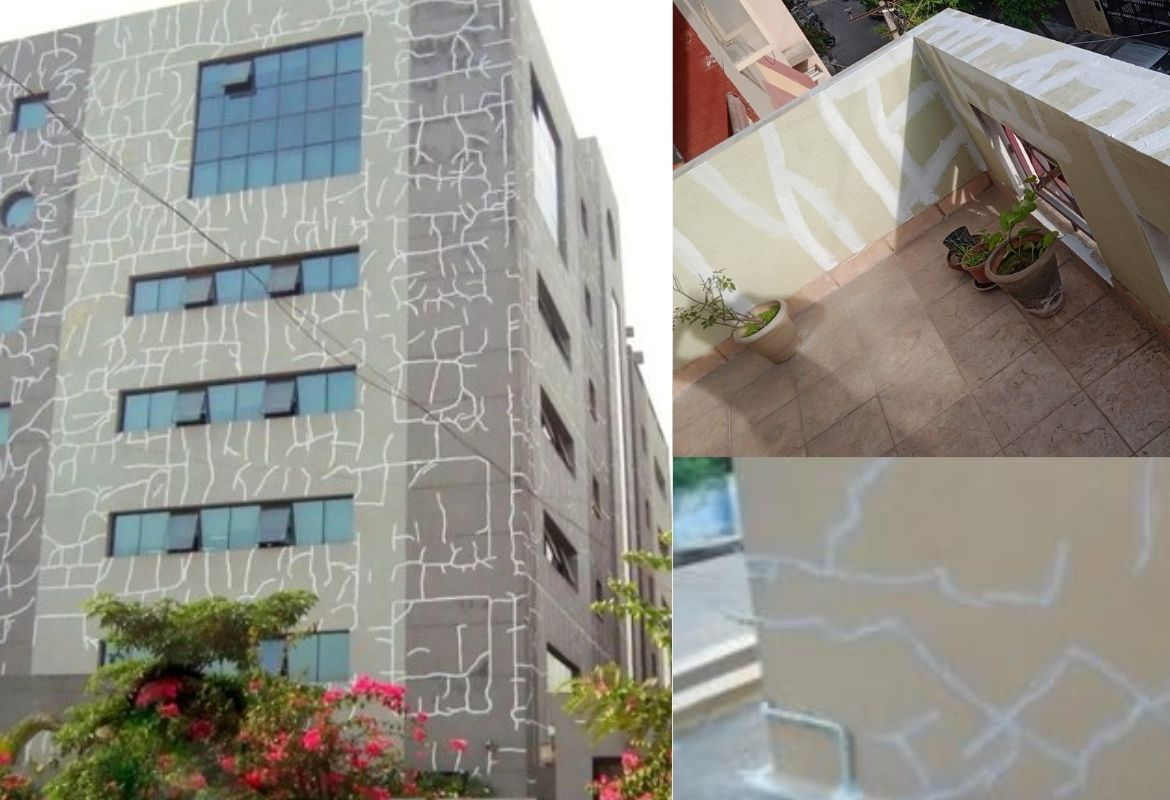Waterproofing Services

Wall Cracks Filling Waterproofing
Poor building process It's possible for the mason to be in a haste, or build a wall when conditions are not proper. He might not prepare adequately for the conditions he is working in. He may throw lots of junk in the trench by the walls as it's being built, and that can create issues later on. He may put the wrong size sill plate on the wall, creating lateral pressure on the wall, or he might backfill too soon after building the wall, while the concrete is still curing.
Settling Footers (the things your foundation sits on) may be built on loose material. It might expand or contract over time because of the weight on it, or you may be in an area with soils that move. In any case, settling results from the shifting. What you'll see is cracks that develop from that settling.
Deterioration Like walls and roofs, the foundation of a house should be maintained periodically. The coatings put on the walls can break down over time, allowing water to come in contact with the concrete. Once that happens, that water begins to affect the strength of the concrete. At that point, you might begin to see discolorations, water, cracks, or even bowing of the walls.
Age Time breaks down just about everything. The fact is, basement structures probably only last a hundred years or so, and then they need to be replaced if no other outside factors are involved. Add settling, shifting, expansive soils, and outside pressures, and you can cut that number down considerably.
Shrinkage Shrinkage comes from the curing of the concrete or mortar. As it shrinks, cracks develop, usually along mortar lines, but sometimes in the form of vertical cracks. Once there is a crack it is weaker than the surrounding wall, and that leads to the possibility that pressures from outside will begin to bow that wall.
Frequently Asked Questions
A1: Wall crack filling is crucial for waterproofing as it is a proactive measure to prevent water infiltration. Filling cracks ensures that water cannot seep through, safeguarding the structural integrity of walls and preventing potential damage.
A2: Look for visible cracks on your walls, especially those that may allow water to penetrate. and signs such as dampness, peeling paint, or mold growth can indicate the need for wall crack filling.
A3: High-quality sealants and waterproofing compounds are commonly used for wall crack filling.
A4: The longevity of wall crack filling waterproofing depends on various factors, including the severity of cracks, the quality of materials used, and environmental conditions.
A5: Yes, wall crack-filling waterproofing is applicable to both interior and exterior walls.
A6: While wall crack filling effectively addresses existing cracks, it may not prevent new cracks from forming.
A7: The drying time for wall crack-filling materials varies, but most allow for painting after a specified period. Consult with the professionals or refer to product guidelines to determine the appropriate waiting time before applying paint.






